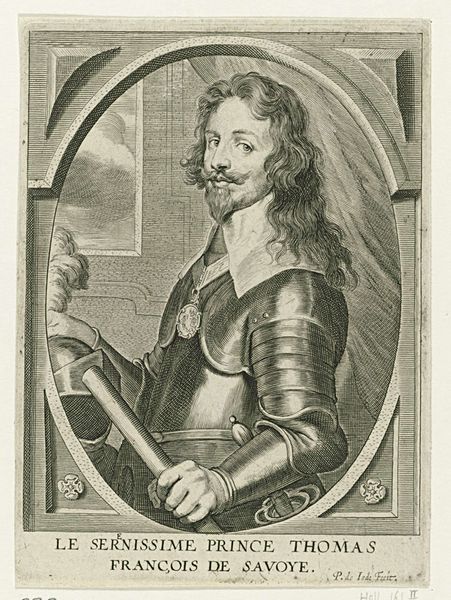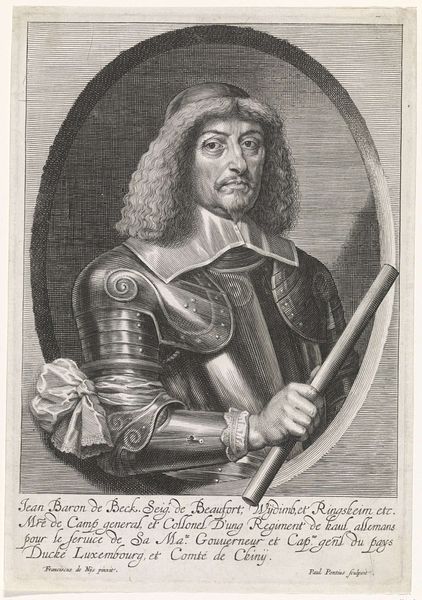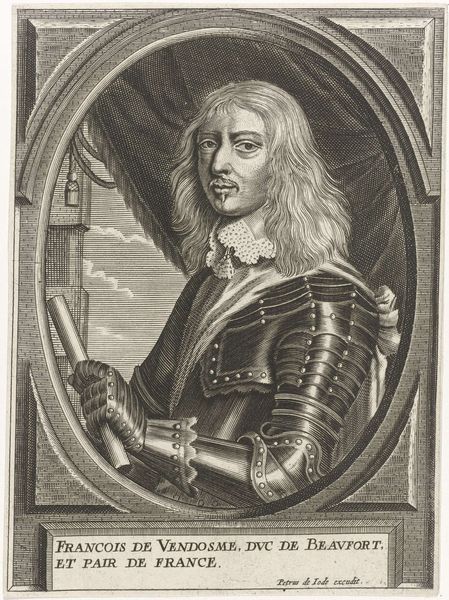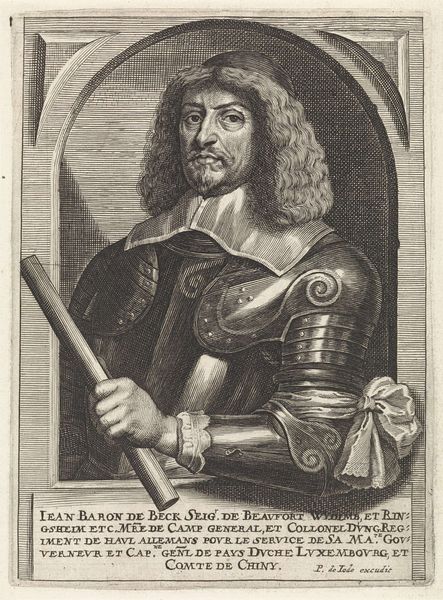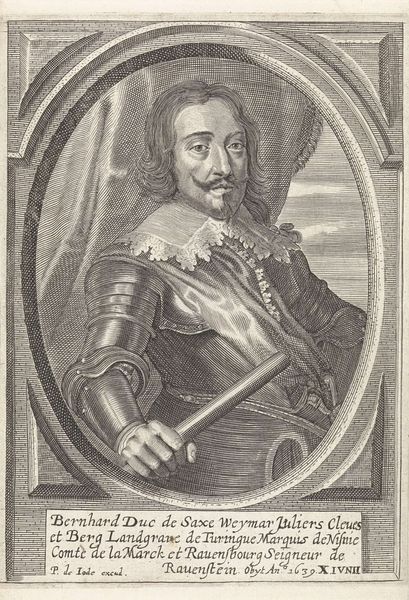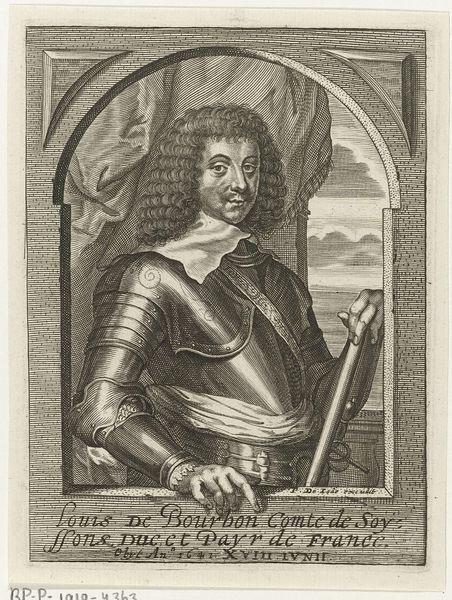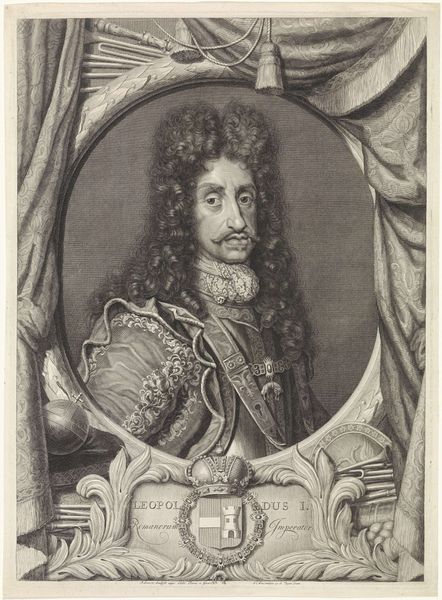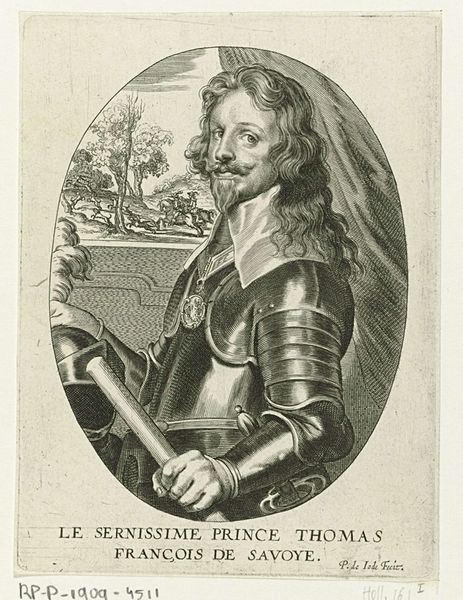
print, metal, engraving
#
portrait
#
facial expression drawing
#
baroque
# print
#
metal
#
old engraving style
#
caricature
#
personal sketchbook
#
portrait reference
#
engraving
Dimensions: height 163 mm, width 119 mm
Copyright: Rijks Museum: Open Domain
Curator: This is "Portret van Ernst, graaf van Isenburg," a baroque engraving rendered on metal, likely sometime between 1628 and 1670. Pieter de Jode the Younger is credited as the artist, and we're fortunate to have it here at the Rijksmuseum. Editor: My first thought is that there's an odd duality to this portrait. He seems both imposing, with all the trappings of military might, yet his facial expression has this almost comical weariness about it. Curator: Note how the composition enhances that tension. The intricate linework brings his armor to life, creating texture that pops. Semiotically, the armour refers to power and status. It's fascinating how the engraver uses dense, almost chaotic lines for the hair, contrasting sharply with the smooth planes of the face. Editor: Right, and that stark contrast certainly says something about the socio-political expectations placed on figures like Count Isenburg. A leader was expected to project strength but also demonstrate a level of… humanity, perhaps? Showing the wear and tear of leadership was as vital to imagery back then as projecting power. Curator: Precisely! Think about the use of oval framing, it encloses the subject in a very classical way, presenting a figure within certain conventions. That form highlights specific compositional elements, framing a narrative we decode at every level of form. The hand holding the helmet, for instance, it uses the reflection in the armor to showcase material wealth through light. Editor: And beyond status display, the portrait probably served multiple functions: commemorating his achievements, solidifying his lineage. What do you make of the somewhat amateurish rendering of the buildings shown beyond his shoulders? Almost like an afterthought. Curator: You’re onto something there. I view those simple architectural shapes structurally, forming a very static element and creating contrast for his figure which in comparison feels more free in form. His clothing with fine lace elements softens his presence and brings out an individual softness rather than presenting a strictly militaristic, symbolic icon. Editor: So we've got an image that encapsulates military, wealth and family status of Count Isenburg for sure, and it’s wonderful how such attention to detail also makes it interesting in our age. Curator: Absolutely! Its lines weave stories of power, status, and the ever-present human condition. I appreciate how our talk has helped unpack it layer by layer.
Comments
No comments
Be the first to comment and join the conversation on the ultimate creative platform.

